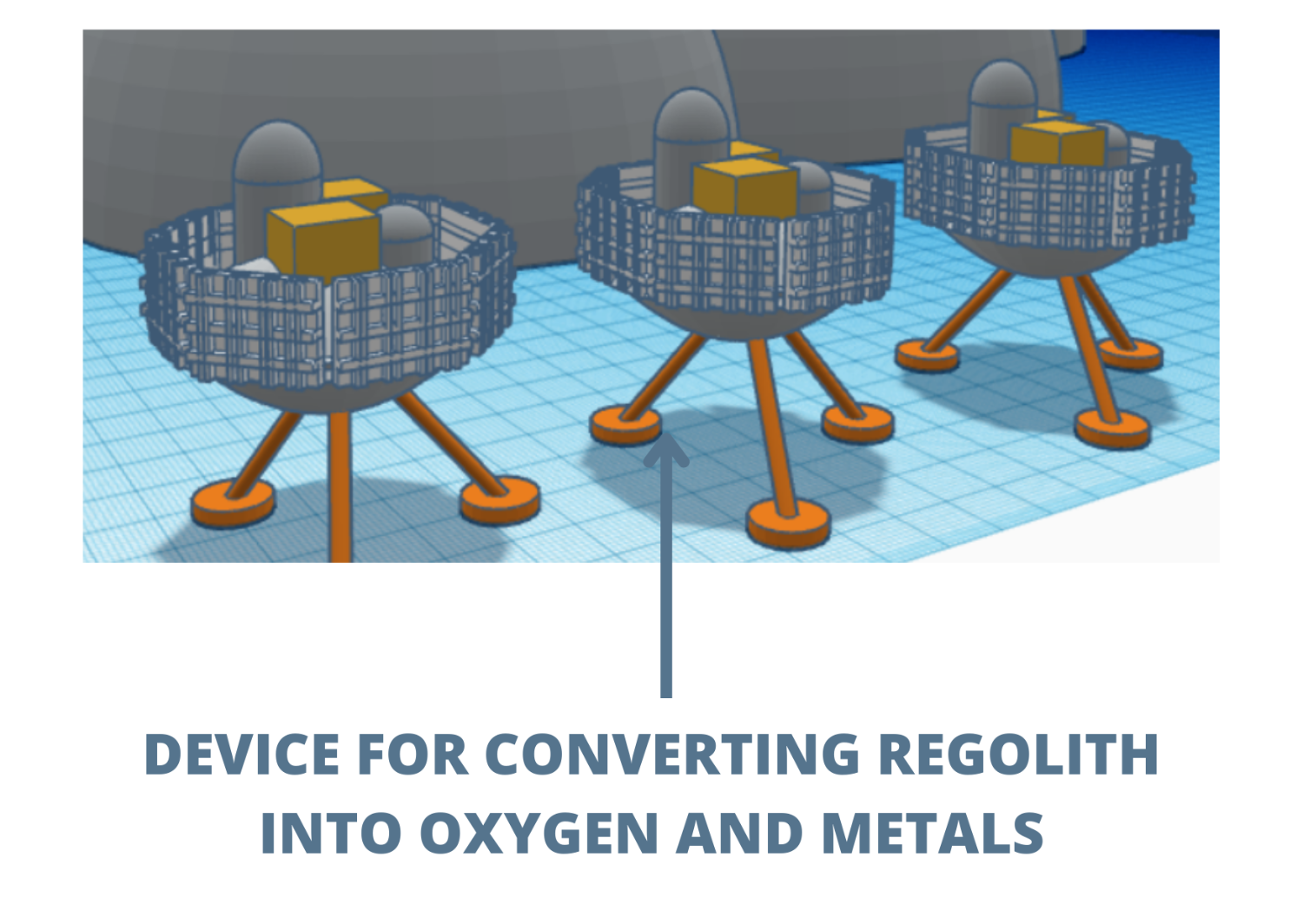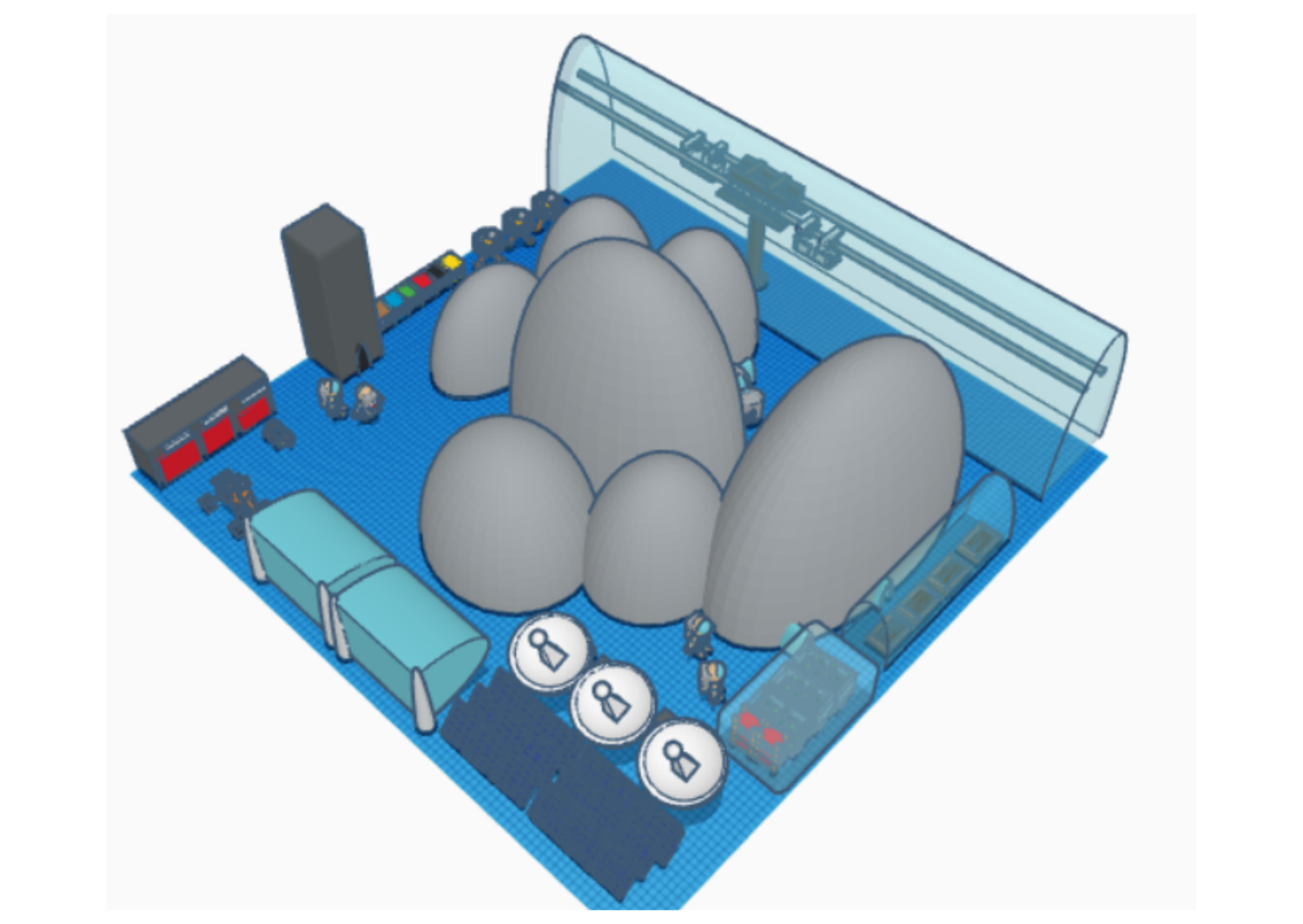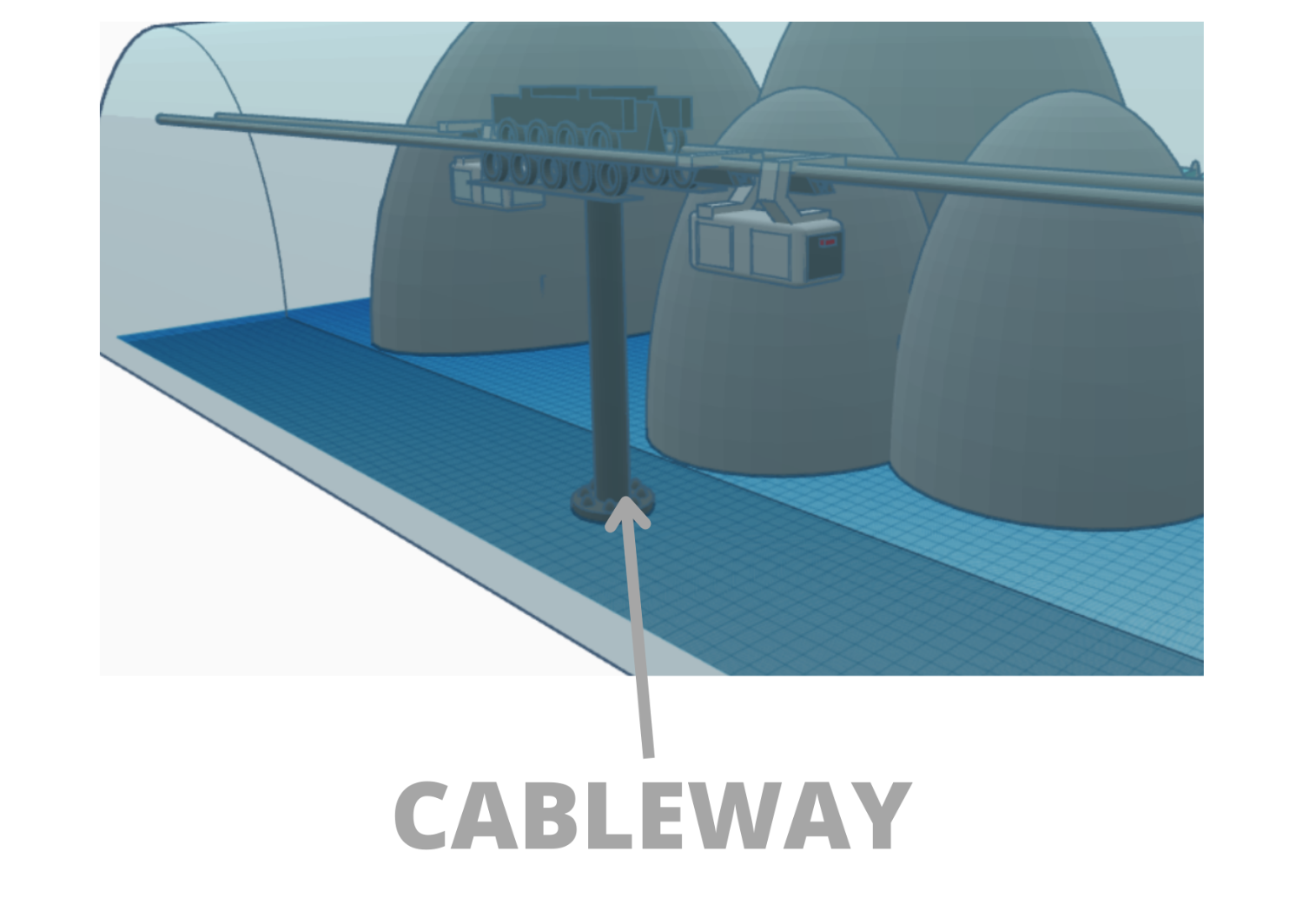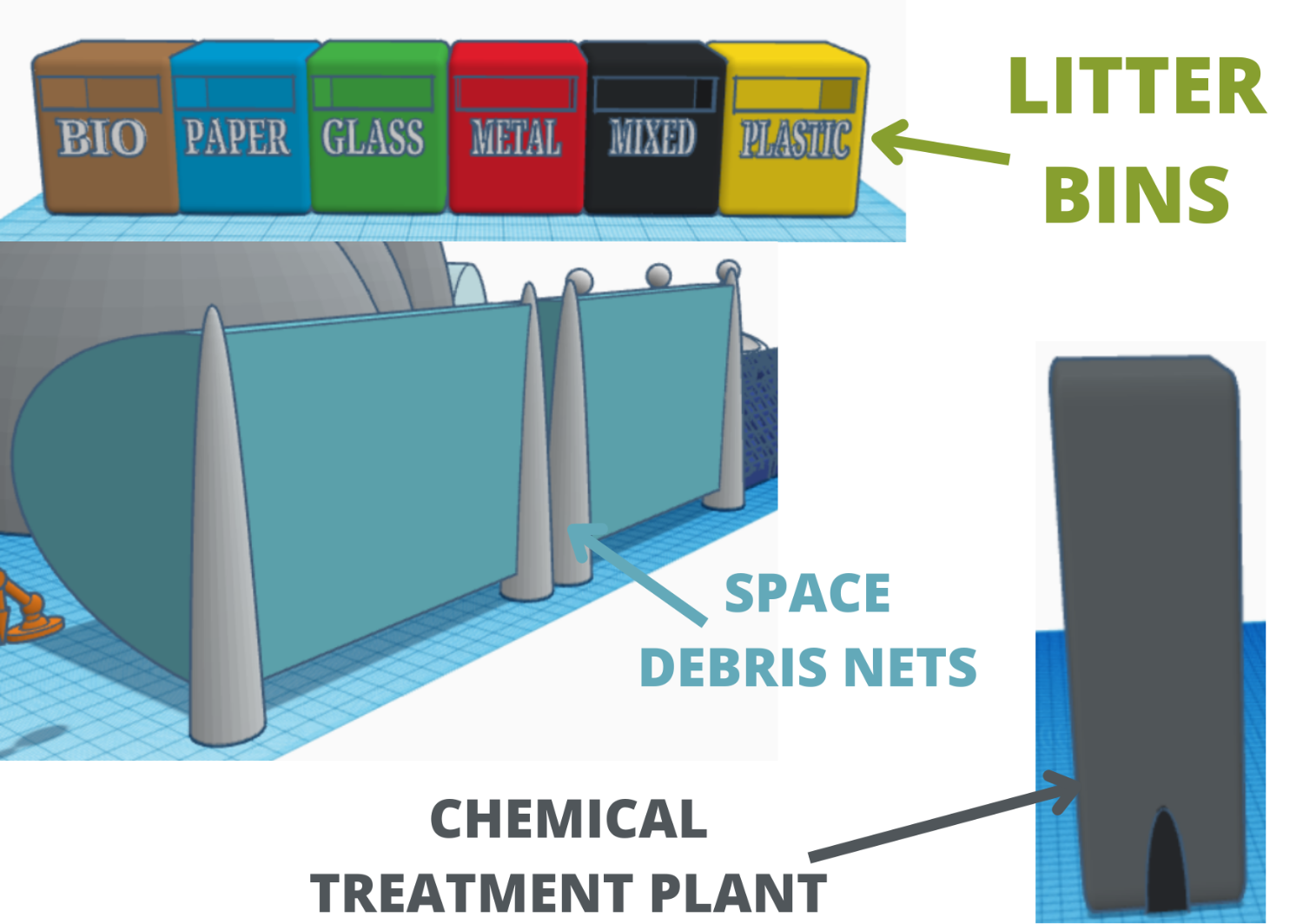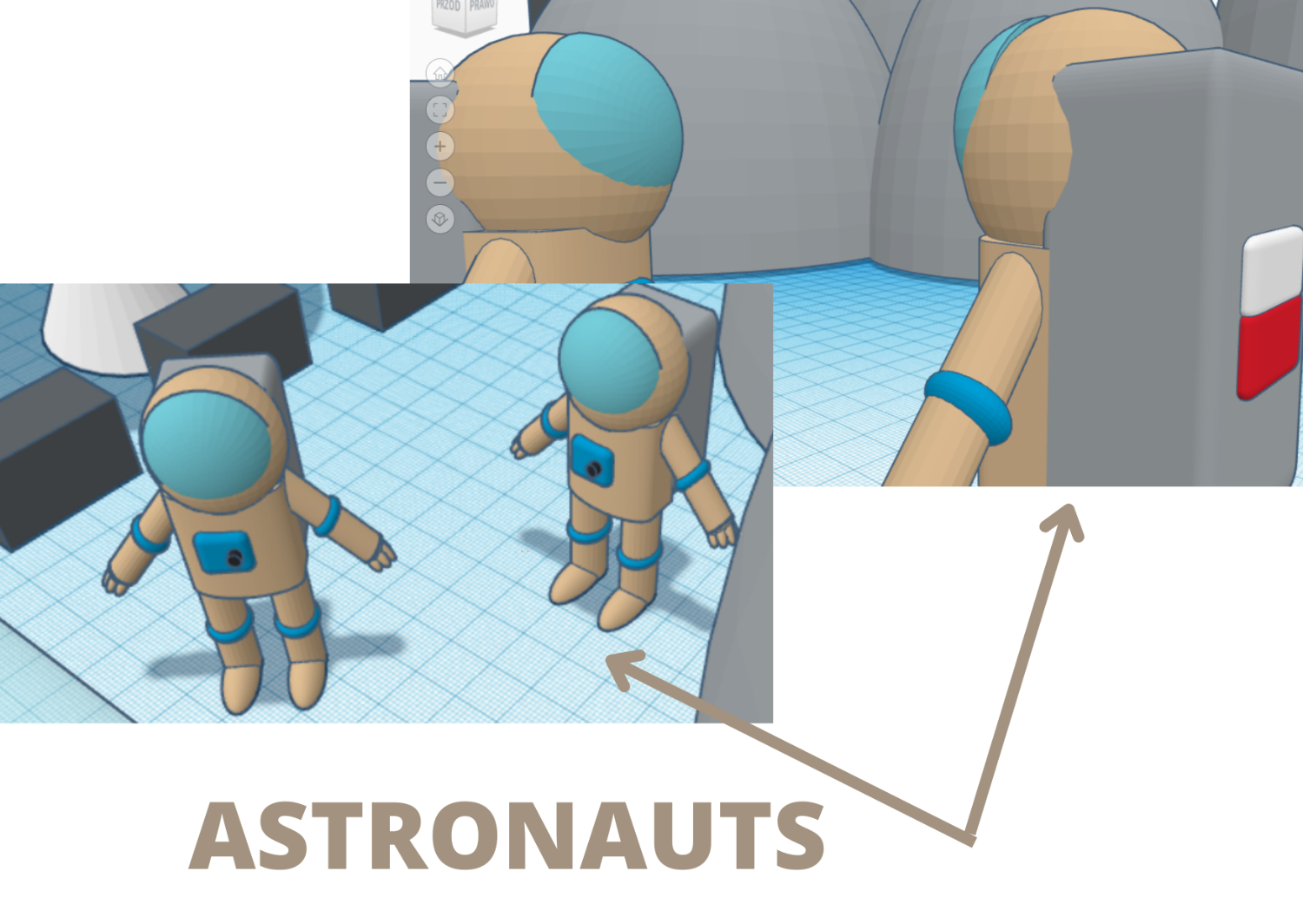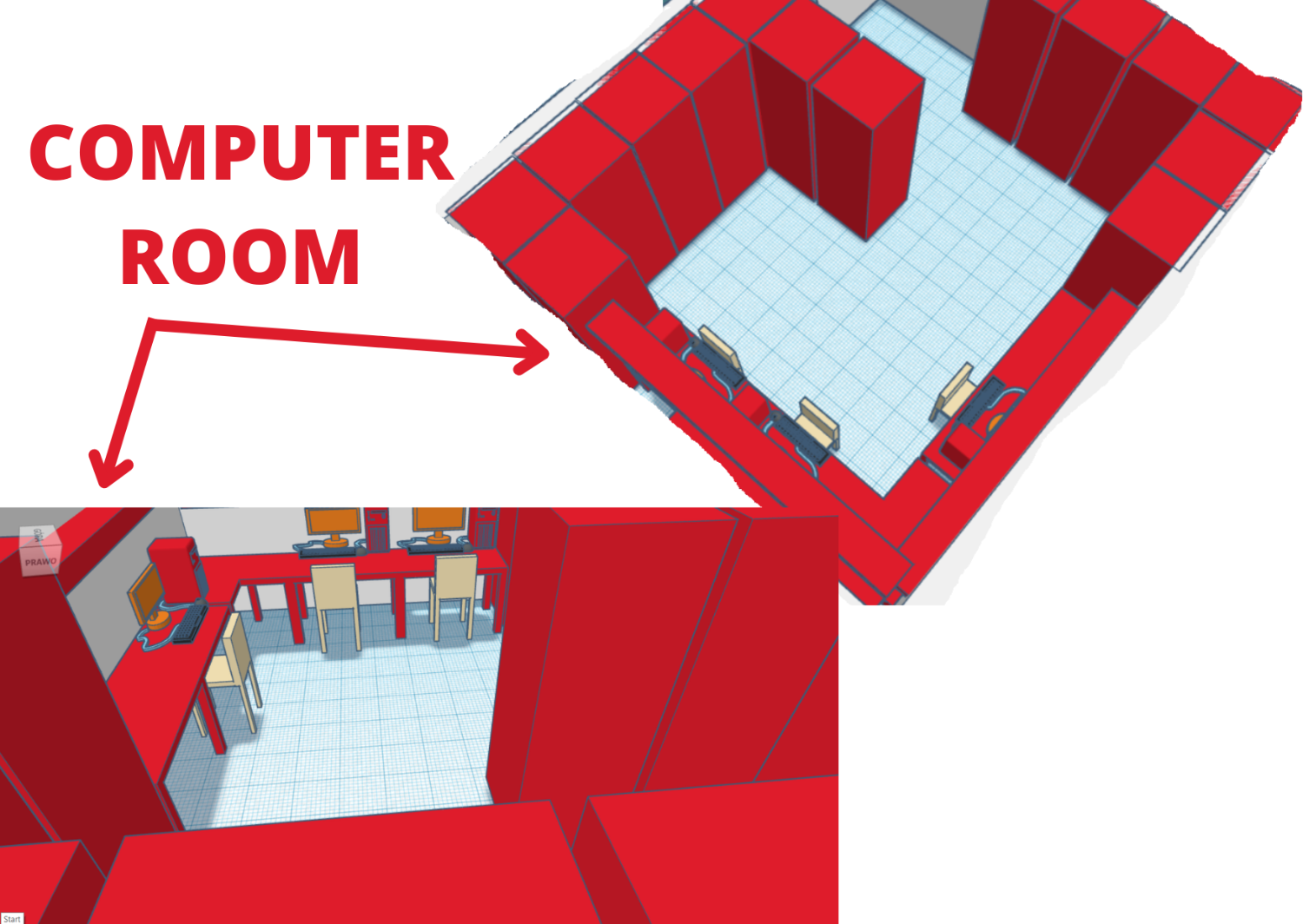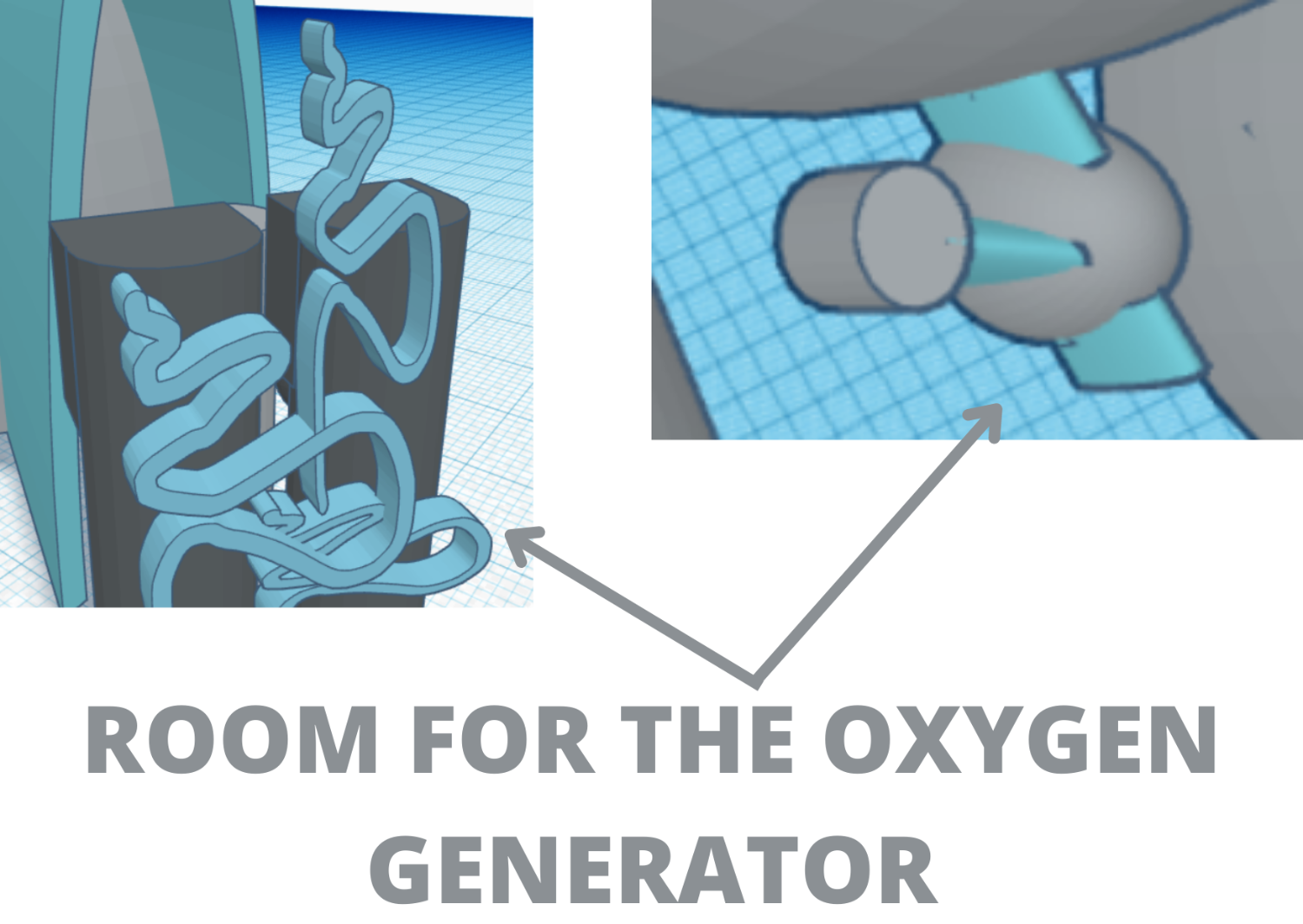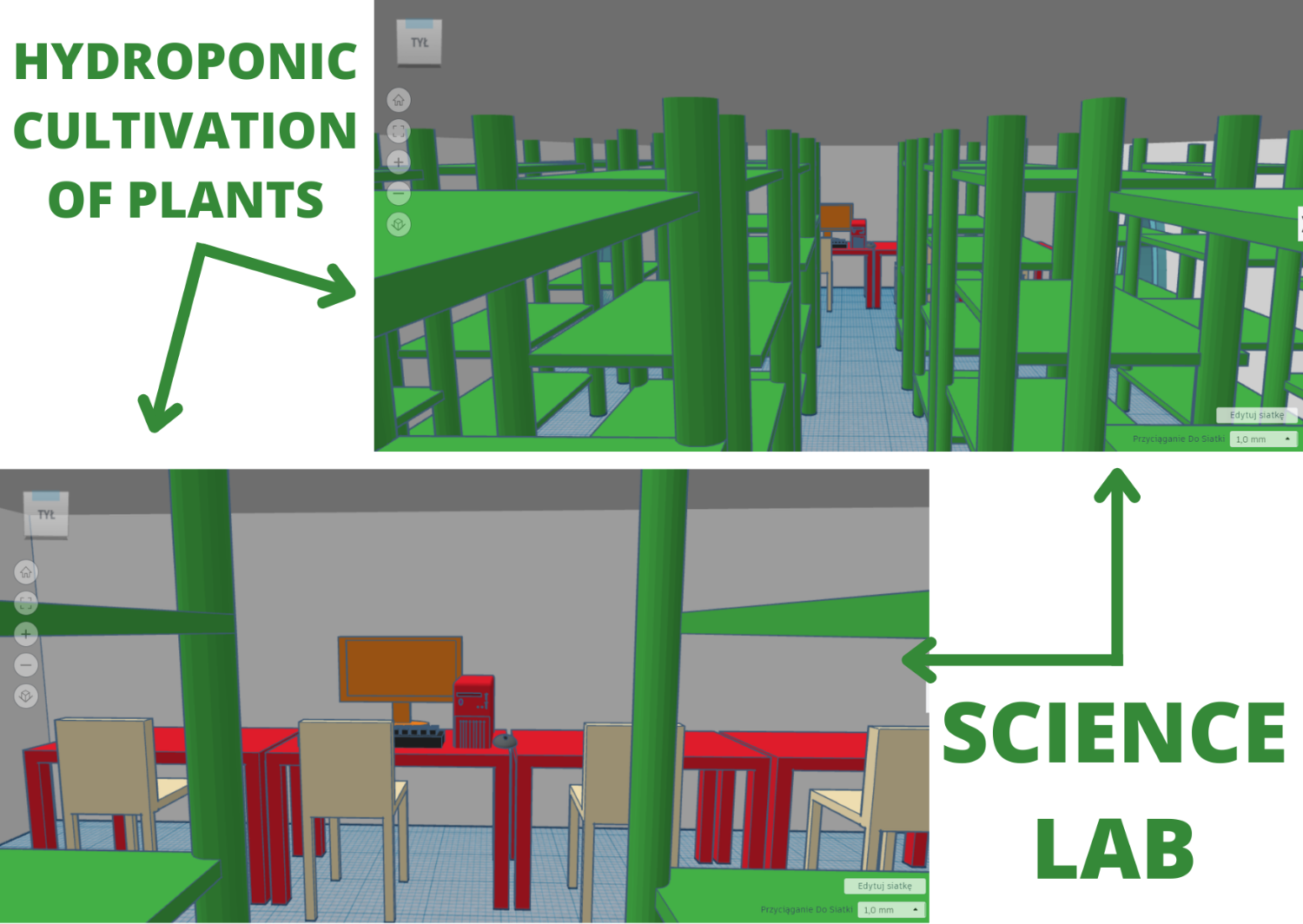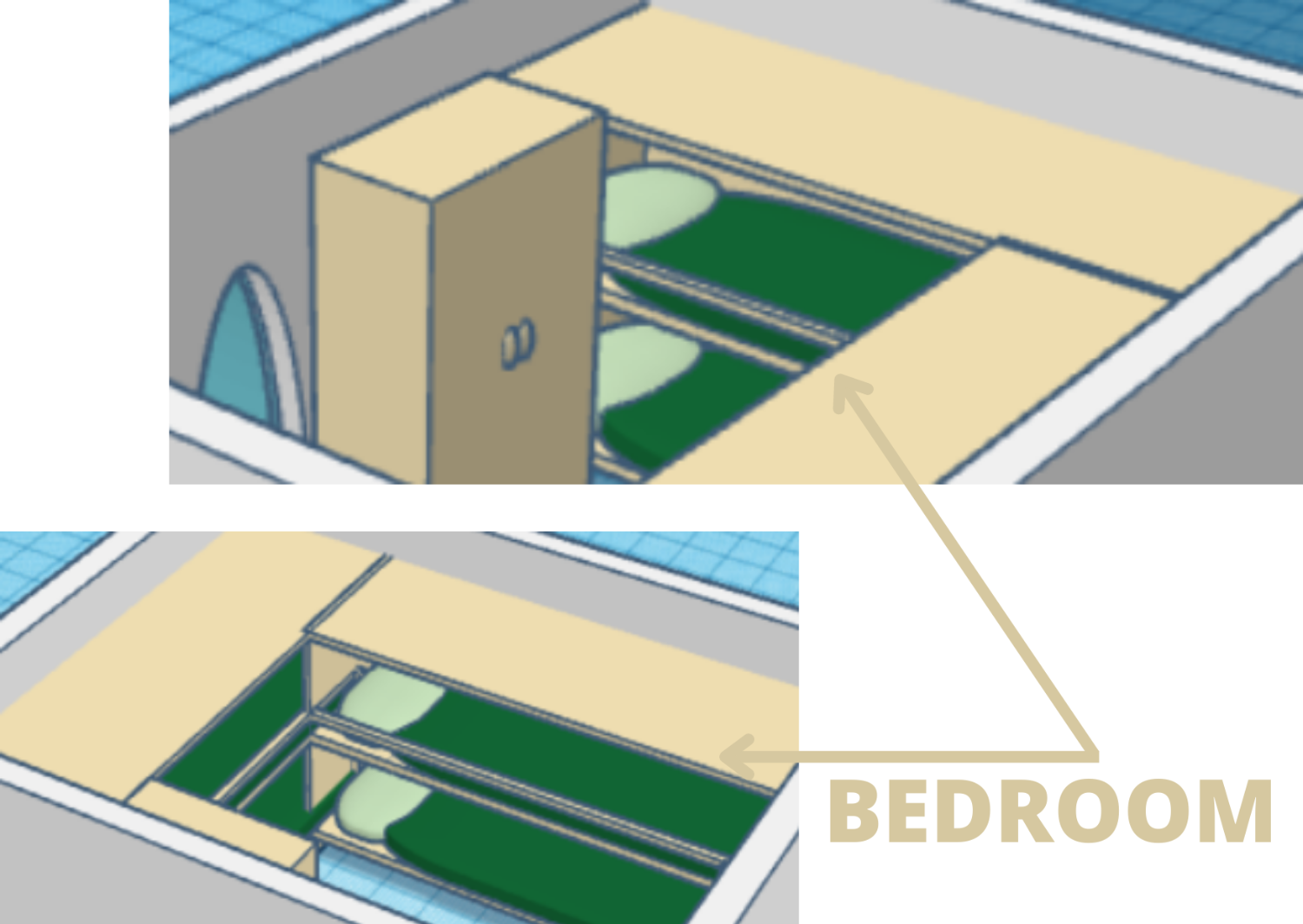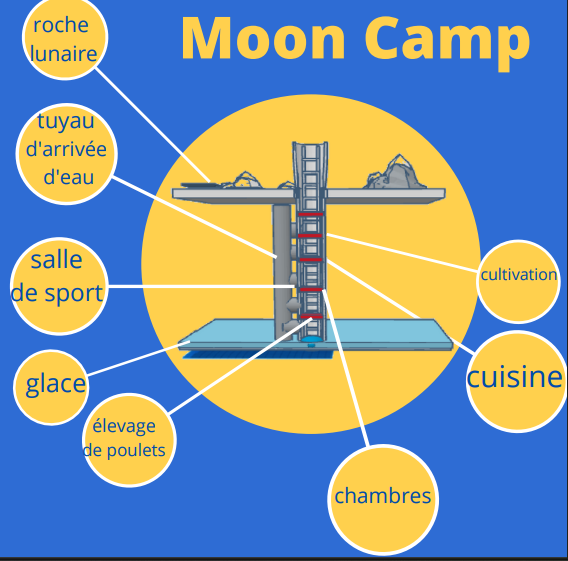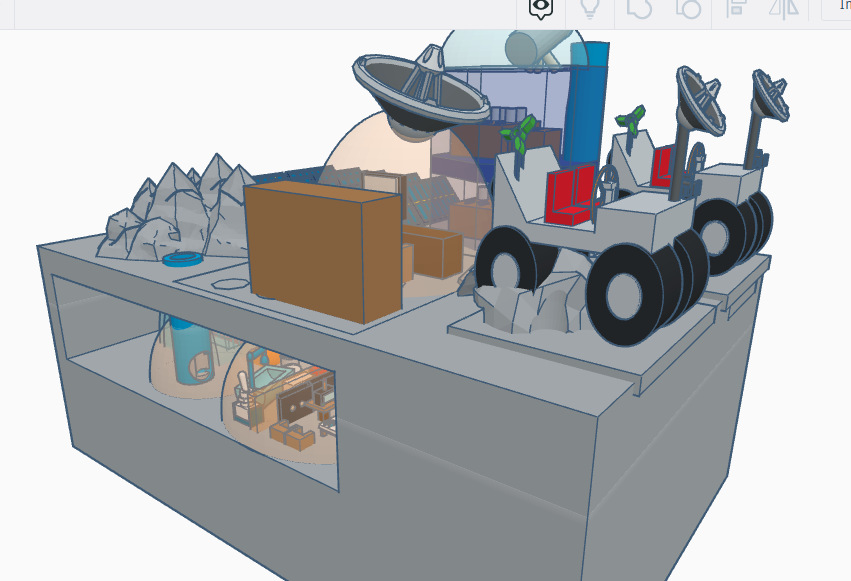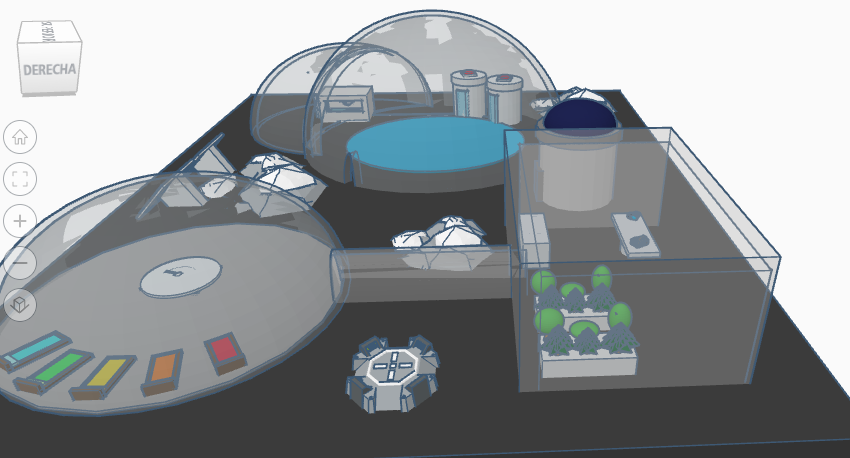Moon Camp Explorers Gallery 2021-2022
In Moon Camp Explorers each team’s mission is to 3D design a complete Moon Camp using Tinkercad. They also have to explain how they will use local resources, protect astronauts from the dangerous of space and describe the living and working facilities.
Team: ZiA team
Szkoła Podstawowa nr 4 im. Mikołaja Kopernika w Bytomiu Bytom Poland 13, 14 2 / 2
External link for 3d
|
Project description
Our moon base “Twardowski” is a facility designed for 4 people. It has all the necessary things for life so that users are independent. Astronauts will find there a place for professional research, breeding animals, growing plants, working with rovers and much more. But above all, astronauts will be able to sleep, eat, use the toilet, exercise or relax after a hard day. All activities performed have separate rooms designated for this.
Our base has
– receivers
– photovoltaic panels with batteries to collect unnecessary energy
– nets that stop space trash (astronauts can then use it to build or repair equipment)
– garage for the rover
– chemical treatment plant
– rubbish bins
– devices changing regolith into oxygen and metals (the resulting products can be used to produce e.g. fuel)
– a cableway (for to move around the satellite and to transport the lunar ice)
– airlock
– oxygen generators
– living quarters (including dining rooms, kitchens, desks, reading/entertainment area)
– bedroom
– bathroom
– a room prepared for to create a gym
– computer room
– workshop
– greenhouse
– aquarium room
– hydroponic plant cultivation
– two rovers
– laboratory |
||||
|
Where do you want to build your Moon Camp?
Shackleton crater Why did you choose this location?
We set up base camp at the South Pole near Shackleton Crater. We chose this location because of the constant sun that would power the solar panels. There are also areas of perpetual shade where there is lunar ice, which could be converted into water. Additionally, the moon’s geological past can be studied in these areas. The second reason was that the best places to live are the poles. There are also areas of carbon dioxide on them that could be used to produce oxygen fuel biomaterials and steel, which would make them more independent in the future. How do you plan to build your Mooncamp? Which materials will you use?
We would use materials such as polyethylene, regolith, wood, metals, water, and astronaut urine (geopolymer concrete) for the base! We would start by bringing in the modules, which the rover would assemble and cover with concrete. This would be done by a special rover that would cover the modules with the mixture, 3D printing. (All rovers would have been moved earlier). The urine could be taken from another mission. Smaller pieces of equipment the astronauts could take with them. The rest would be brought by a parallel transport, and the astronauts would put everything together. |
||||
|
Water
|
Food
|
Electricity
|
Air
|
Protection
|
|
Astronauts at our base will not need regular deliveries of food because it will be produced on-site. Our base has a greenhouse and an aquarium room that is sealed to keep air from escaping. They are made of polyethylene. This ensures that the plants and animals will have access to sunlight at all times. Darkness is also necessary for life, so we have prepared a system of covering the greenhouse and aquarium room to provide the plants and animals with only 8 hours of sunlight per day. Otherwise, the plants would wilt and the animals would be tired. |
Astronauts at our base will not need regular deliveries of food because it will be produced on-site. Our base has a greenhouse and an aquarium room that is sealed to keep air from escaping. They are made of polyethylene. This ensures that the plants and animals will have access to sunlight at all times. Darkness is also necessary for life, so we have prepared a system of covering the greenhouse and aquarium room to provide the plants and animals with only 8 hours of sunlight per day. Otherwise, the plants would wilt and the animals would be tired. |
In order for devices on the Moon to work, energy is needed. Unfortunately, on the Moon we can’t use energy from water, because there are no rivers, nor from wind, because there is no atmosphere there. However, you can use solar energy. It’s enough to install solar panels that produce energy, which will be accumulated in fuel cells. They are a kind of accumulators. Gathering it is necessary because several times a year there are eclipses which last for hours. Fully charged cells provide uninterrupted operation for 17 days, so lunar night is no problem |
All organisms need air to live, including oxygen, which makes up 20% of all air. The International Space Station produces oxygen by electrolysis. However, all lunar bases cannot use it – they have to become self-sustaining. The solution is plants and algae. They produce oxygen by taking in carbon dioxide and provide food. Algae take up little space and only need 8 square meters per person. However, eating the same thing every day is not fun, so we also chose to grow plants. They take up more space, but give you fresh air and are delicious. |
In the base, the role of protection is played by polyethylene and regolith. They protect the base from sunlight and meteorites. We used lunar dust to encase the space base to protect it from meteorites and sunlight. Polyethylene covers the cableway, greenhouse, and aquarium room. The last two rooms, in addition to a transparent screen, have a second screen which, when extended, cuts off the sun’s rays so that the plants and animals do not get too much light. The role of the cableway cover is to protect it from things that might damage it. |
|
Describe a day on the Moon for one of your Moon Camp astronauts
An astronaut’s day at our lunar base seems simple. However, sometimes it turns out to be difficult due to the resulting problems. An ordinary day begins with a wake-up call. Then the astronaut has time for the morning toilet. Then he exercises in the gym so that he does not lack strength for the whole day. Before breakfast, he has to go to the greenhouse to take care of the plants. He waters them. Then he harvests them and prepares a meal from them. Then he has a moment to rest. After a moment’s rest, he begins his extensive daily research and observation. This means he checks the technical condition of the equipment, inspects the oxygen generator and the chemical treatment plant. After a few hours, he begins to work in the workshop Repair, but mainly makes new utensils from pyrite and other materials. Then the astronaut has time to prepare and eat lunch. To digest his food properly, he rests in his bedroom or the rest area. His next task is to work on the train that brings ice from the other pole. Besides, the astronaut takes care of the rovers. At the end of the day, he prepares and eats dinner, after which he collects all the trash every five days and takes it to the appropriate garbage cans outside and to the chemical treatment plant. At the very end, the astronaut washes, rests and goes to sleep.
|
||||


